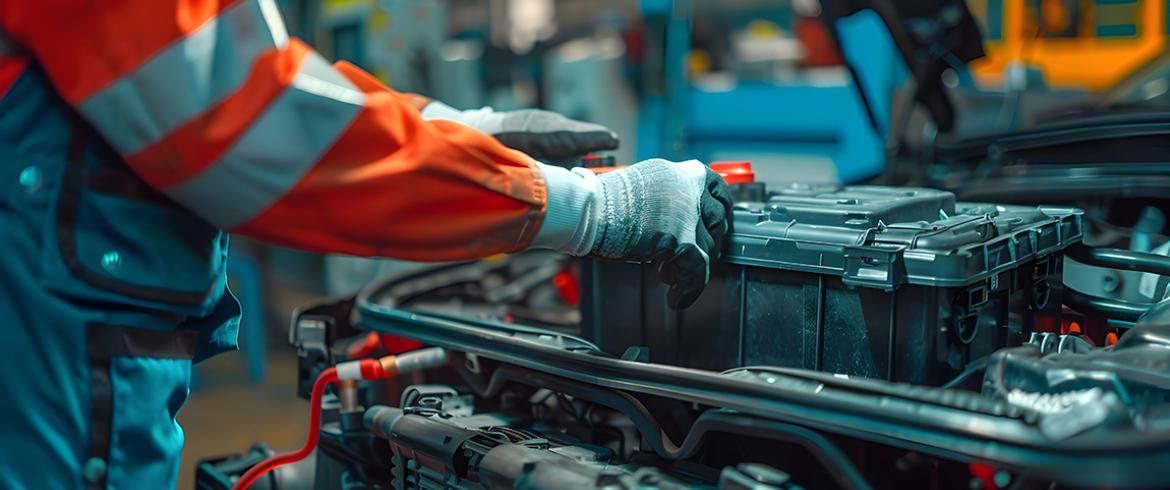
AI-generated by Ayan for Adobe Stock
Researchers from the FAMU-FSU College of Engineering are collaborating with top universities, including Stanford and SLAC National Accelerator Laboratory, to tackle one of the energy sector’s biggest challenges: storing electricity for the grid safely, reliably and at a low cost.
As part of the Aqueous Battery Consortium, a project funded by the U.S. Department of Energy (DOE), these scientists are working to overcome the limitations of batteries that use water as an electrolyte.
The consortium brings together experts from 15 research institutions across the U.S. and Canada, to develop affordable, grid-scale energy storage solutions. With the DOE's backing, the project is eligible for $62.5 million over five years under the DOE’s Energy Innovation Hubs program. The initiative is led by Stanford University and SLAC.
“This project will tackle the grand challenge of electrochemical energy storage in a world reliant on intermittent solar and wind power,” said Yi Cui, the project’s director and a Stanford professor. “We need grid-scale storage solutions that are dependable and affordable over the long term.”
A massive amount of energy storage is essential to reducing global greenhouse gas emissions, Cui added. He emphasized that water is the only viable solvent available in the quantity and at the cost necessary for such batteries.
Cui and his team are focused on how to control charge transfer between solids and water, achieving near-perfect efficiency at the molecular level. “We don’t know the solutions to these challenges yet, but with the DOE’s support, we aim to find out,” Cui said.
Pioneering a New Aqueous Battery
Lead-acid batteries, which power conventional vehicle engines, are an early type of aqueous battery. However, they lack the energy density required for grid storage and contain toxic lead, posing significant environmental hazards. According to a 2020 UNICEF report, lead poisoning affects one in three children worldwide, primarily in developing nations, and much of this contamination comes from lead-acid batteries.
The Aqueous Battery Consortium is committed to environmental justice and envisions creating sustainable, secure, and affordable energy storage solutions. “We hope our inventions may someday benefit all of humanity,” said Cui.
The consortium’s goal is to develop a new kind of aqueous battery that is safer, more energy-dense than lead-acid batteries, and costs one-tenth of today’s lithium-ion batteries. The team plans to achieve this using inexpensive raw materials, simple electronics and efficient manufacturing techniques. The technology is expected to charge and discharge quickly and to be safer than current options.
The consortium’s goal is to develop a new kind of aqueous battery that is safer, more energy-dense than lead-acid batteries, and costs one-tenth of today’s lithium-ion batteries. The technology is expected to charge and discharge quickly and to be safer than current options.
“The barriers to developing this new battery have challenged inventors for years,” said Linda Nazar, the project’s chief scientist and a professor of chemistry at the University of Waterloo. Nazar has spent over 20 years researching energy storage and conversion, including aqueous batteries. “Water can corrode battery materials, cause side reactions, and result in failure after hundreds of charge-discharge cycles under practical conditions.”
Despite these challenges, the Aqueous Battery Consortium aims to advance battery technology by addressing these issues. The consortium includes 31 battery scientists, engineers and physicists from leading universities across North America, along with researchers from SLAC, the U.S. Army Research Lab and the U.S. Naval Research Lab.
FAMU-FSU’s Role in Battery Research
Researchers at the FAMU-FSU College of Engineering will play a key role in advancing aqueous battery technology. Egwu Eric Kalu, a Department of Chemical and Biomedical Engineering professor, will lead the college’s efforts.

Professor of Chemical and Biomedial Engineering
“FAMU-FSU College of Engineering researchers will provide scientific direction for developing aqueous batteries suitable for grid-level, large-scale electrical energy storage needed to decarbonize the U.S. electric grid,” Kalu said. The college will also focus on workforce development, particularly training underresourced engineers for the energy storage industry.
Collaborative, Interdisciplinary Approach
The project’s 31 co-principal investigators and a large group of students and postdoctoral researchers are organized into six teams focusing on broad research aims and three tackling cross-cutting challenges.
“Our ambitious goals can only be achieved by a well-integrated team of experts working across disciplines,” said Johanna Nelson Weker, the consortium’s assistant director and a lead scientist at SLAC. “Collaboration encourages fresh perspectives and innovative solutions.”
The consortium members will meet regularly to share progress, participate in scientific forums and cultivate a large intellectual community of energy storage researchers. Leaders hope the Aqueous Battery Consortium will become a global dynamic center for aqueous battery research.
A Broad Network of Leading Institutions
In addition to Stanford and the University of Waterloo, the project’s research network includes several prestigious institutions: California State University, Long Beach; Florida A&M University/Florida State University College of Engineering; North Carolina State University; Oregon State University; San Jose State University; UCLA; UC San Diego; UC Santa Barbara; University of Maryland; and the University of Texas at Austin.
Together, these institutions aim to overcome the limitations of existing battery technology and develop a sustainable, scalable solution to power the grid in the coming years.
RELATED ARTICLES
Researchers Advance Electric Vehicle Battery Safety With New Energy Absorption Design
Researchers develop battery component that uses compound from plants
Taking charge: Researchers team up to make better batteries
